Guitar pedals shape the sound of electric guitars in various ways, and the bypass feature is a crucial element that affects tone when these pedals are not engaged. There are two prevalent types of bypass in FX pedals & the common dilemma: buffered bypass vs true bypass. True bypass aims to preserve a guitar’s tone by allowing the signal to pass directly through the pedal, completely untouched when the effect is disengaged. On the other hand, buffered bypass employs a buffer to drive the signal, which can help preserve the integrity of the guitar’s sound over long cable runs.
The difference between these two approaches is a hotly debated topic among guitarists and audio engineers. True bypass is often praised for keeping the original guitar tone intact when the pedal is not active. However, this method may introduce problems such as signal loss, especially with multiple pedals connected in a chain. Buffered bypass can address these signal chain issues by strengthening the signal, ensuring that the tone remains strong and consistent regardless of the number of pedals used.
Choosing between true bypass and buffered bypass pedals depends on a variety of factors including, but not limited to, the guitarist’s rig, the type of sound they are aiming for, and the specific context in which they are playing. Some guitarists prefer the purity of true bypass, while others appreciate the stability and reliability that buffered bypass offers, especially in complex pedal setups. Understanding the impact of each bypass method on a guitar’s tone is vital for any player looking to optimize their sound for performance or recording.
Related: The History of Guitar Pedals
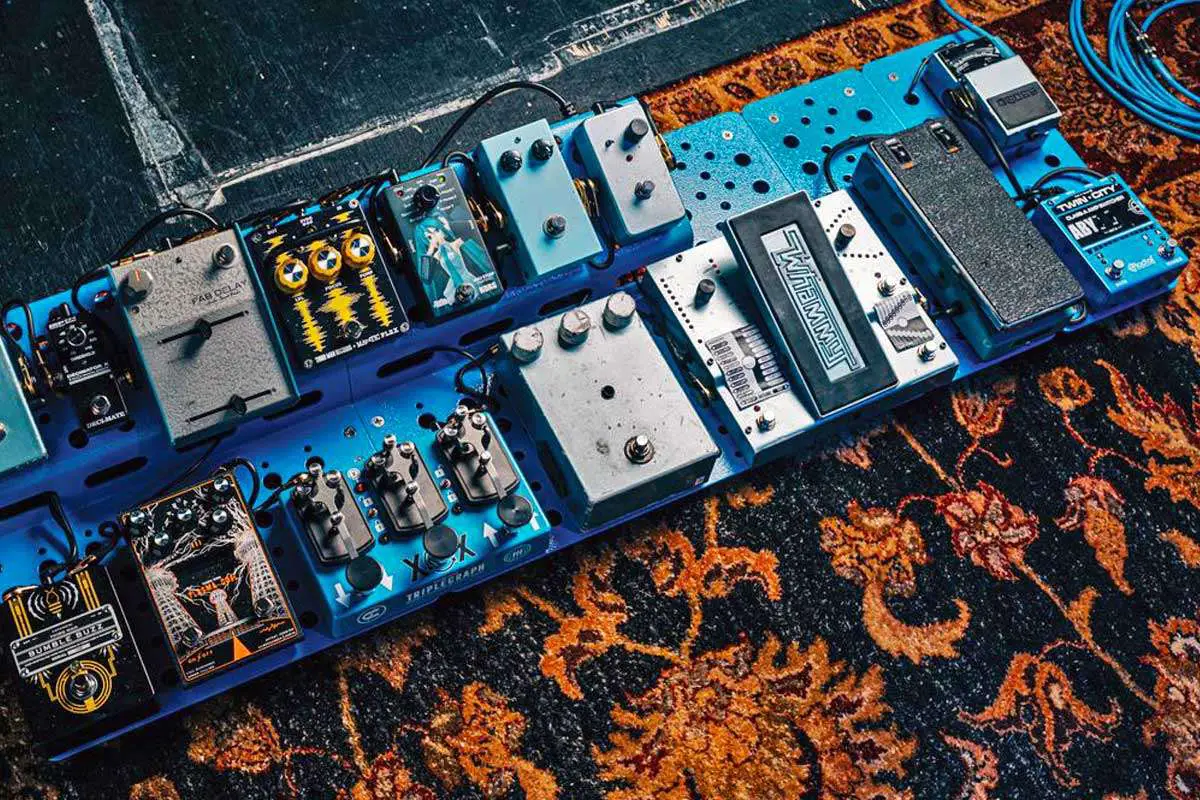
Fundamentals of Signal Processing
In the context of guitar effects, understanding how the signal is processed is crucial whether one uses a true bypass or a buffered bypass. The integrity of the guitar signal through the signal path can be greatly influenced by the type of pedal employed.
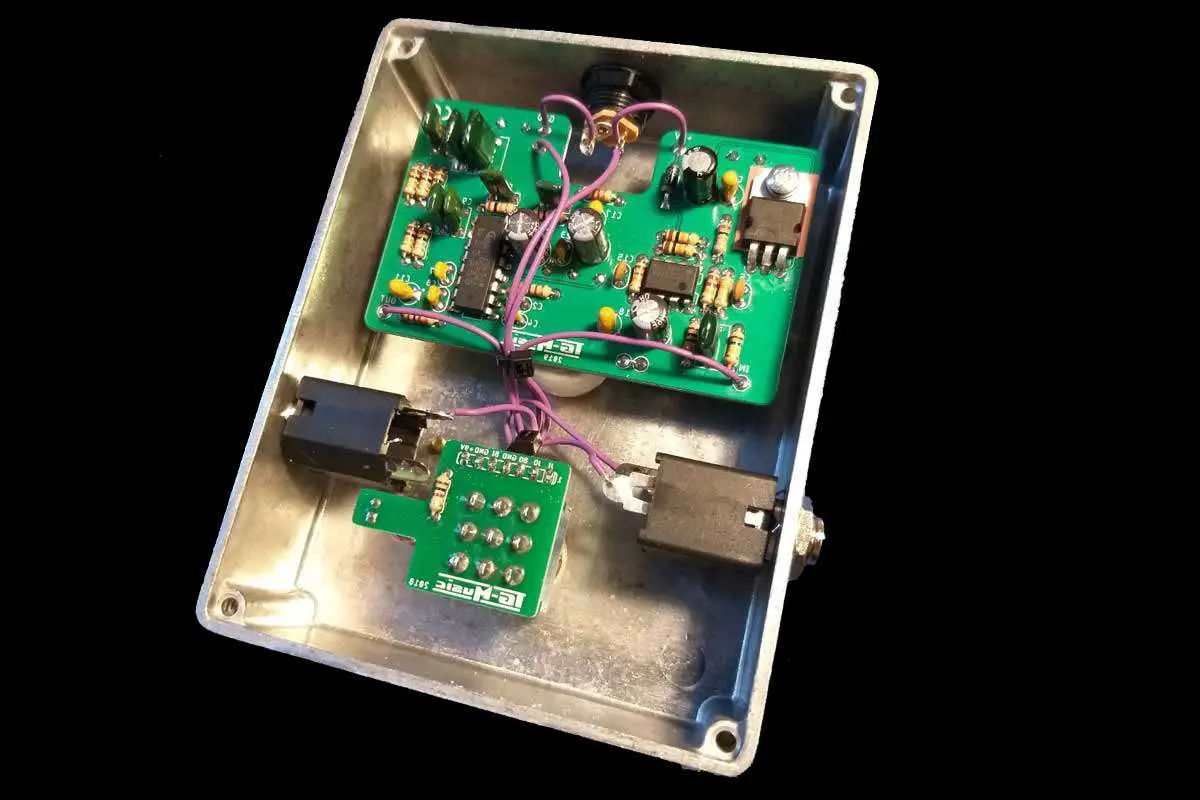
Signal Chain Basics
The signal chain refers to the path the guitar signal takes from the guitar through various pedals and eventually to the amp. Elements within this chain, such as true bypass and buffered pedals, significantly impact the signal quality. Each device in the pedal chain has the potential to add noise or to alter the tone, which makes the choice between true bypass and buffered bypass important for musicians.
Understanding True Bypass
A true bypass pedal, when disengaged, routes the guitar signal directly from input to output, theoretically preserving the original signal quality and tone. This is achieved by physically connecting the pedal input directly to the output, excluding the pedal’s circuitry from the signal path. Musicians often prefer true bypass pedals to prevent the pedal’s circuitry from altering the signal when the effect is not in use.
Understanding Buffered Bypass
In contrast, a buffered pedal always involves the pedal’s circuitry in the signal path, even when the effect is bypassed. A buffer converts the high impedance signal from the guitar to a low impedance one, which can drive longer cables and more pedals with less signal degradation. However, if designed poorly, a buffer may introduce unwanted coloration to the signal. An effective buffer in a buffered pedal can be especially beneficial in a long pedal chain where signal loss is a concern.
Technical Specifications
Within the realm of guitar pedals, technical specifications such as impedance, capacitance, and noise levels are crucial to understanding the impact of buffered bypass and true bypass on a musician’s sound. These specifications directly affect signal integrity, tone quality, and overall performance.
Impedance and Capacitance
Impedance differs notably between buffered bypass and true bypass units. Buffered bypass pedals often present a low impedance output, which can drive long cable runs without significant signal loss or loss of high end. Contrastingly, true bypass pedals may contribute to a higher impedance load when disengaged, which can cause tone loss especially with multiple pedals chained together.
Capacitance in cables accumulates with length, potentially dulling the signal. Buffered pedals can mitigate this effect through active electronics which result in a more consistent fidelity of the signal.
Signal Loss and Tone Suck
A significant concern for guitarists is signal loss, also known as tone suck, which refers to the loss of signal quality, especially the high end frequencies, as the signal passes through multiple pedals and cables. Buffered bypass pedals actively combat this issue by strengthening the signal, allowing it to remain more intact through the path. True bypass pedals have a neutral effect on the signal when engaged, but can contribute to signal degradation when in an off state due to increased impedance and capacitance in the signal chain.
Noise and Fidelity
Noise introduction varies with pedal design. Buffered bypass can sometimes introduce a slight hiss or hum due to active circuitry, but this is not uniform across all units and is often outweighed by the positive impact on fidelity and noise reduction over long cable runs. In contrast, true bypass provides a direct path from input to output when disengaged, typically resulting in less added noise. However, the lack of signal conditioning can result in a lower fidelity, should the signal path contain high capacitance or impedance.
Guitar Pedals in Detail
Guitar pedals, essential for crafting guitar tone, come in various types, each affecting the sound in distinct ways. Setting up a pedalboard requires careful consideration of signal path and cable quality to maintain sound integrity.
Types of Pedals
Guitarists use overdrive and distortion pedals to increase signal gain for a warm, gritty, or aggressive tone. While overdrive provides a smooth, natural-sounding gain, often resembling a tube amp’s sound, distortion delivers a more intense, hard-hitting effect, useful in many rock and metal genres. Fuzz pedals, a subset of distortion, create a highly saturated, buzzy tone characteristic of classic rock.
Delay and reverb pedals manipulate the time aspect of the guitar signal. A delay pedal repeats the played notes after a set period, which can be adjusted to create rhythmic patterns or a fuller sound. Reverb simulates the effect of sound reflecting in a space, adding depth and ambiance to the guitar tone.
Pedalboard Setup
When assembling a pedalboard, the order of pedals is crucial. Typically, it’s suggested to place dynamic effects like overdrive and fuzz first, followed by modulation effects like chorus or flanger. Time-based effects such as delay and reverb are generally placed at the end of the signal chain. A well-organized pedalboard not only streamlines setup but also ensures that each pedal operates at its best without interference from others.
Guitar Cable Considerations
The length and quality of guitar cables have a significant impact on signal strength and tone clarity. Long cable runs can introduce noise and degrade the signal, especially high frequencies. For optimal sound quality, it’s advisable to use the shortest length necessary to connect the guitar to the pedals, and thereafter, to the amplifier. High-quality cables with robust shielding and durable connectors are preferred to reduce noise and ensure the guitar’s signal remains strong and clear through the pedalboard.
Bypass Modes Compared
When guitarists are choosing pedals for their signal chain, the decision between true bypass and buffered bypass circuits plays a critical role in shaping their sound. Each type has distinct advantages that make them suitable for different situations and preferences.
Advantages of True Bypass
True bypass pedals, when switched off, effectively remove the pedal from the signal chain. This allows the guitar’s signal to pass directly to the amplifier without any interference from the pedal’s electronics. One of the primary advantages of true bypass is the preservation of signal integrity; the sound remains uncolored and pure. This is particularly beneficial for guitarists who prefer a clean and unaltered tone, or when using vintage gear known for its distinct sound.
Advantages of Buffered Bypass
In contrast, buffered bypass pedals actively process the guitar’s signal even when the pedal is off, preventing high-frequency loss due to long cable runs—a known issue with true bypass. Buffered bypass can also drive the signal stronger through the remaining pedals, reducing the possibility of signal degradation. Moreover, as per an IEEE resource, buffering can also incorporate noiseless switching, which is incredibly advantageous for professionals who require silent operation and reliability during performances.
Real-World Applications
In the context of guitar pedal setups, buffered and true bypass play significant roles in preserving the core tone during live performances and recording sessions. The choice between these two types of bypass can affect pedal order and interaction, as well as how a guitarist deals with long cable runs that can potentially degrade the signal.
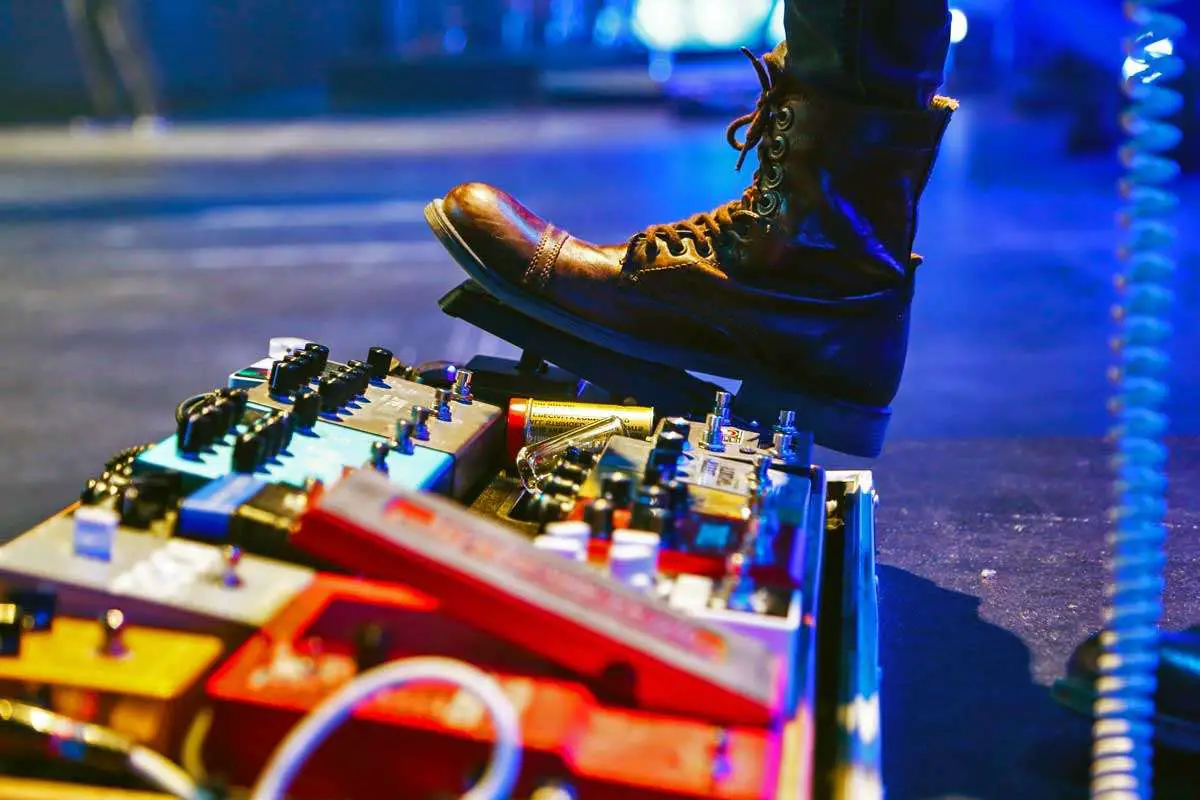
Pedal Order and Interaction
When determining pedal order, buffered bypass pedals can be strategically placed to preserve the guitar’s signal integrity. They bolster the signal, preventing high frequencies from being lost due to interaction with other pedals’ circuitry. For example, placing a buffered bypass pedal early in the chain helps maintain the guitar tone by ensuring that the signal is strong as it passes through subsequent pedals.
Dealing with Long Cable Runs
Long cable runs can cause signal loss, particularly in the high-end frequencies, which results in a muted or dull tone. Buffered bypass pedals counteract this issue by driving the signal through the cables with less degradation. This is crucial for maintaining a guitar’s core tone over distances, making buffered bypass an ideal choice for larger stages or complex pedal setups where the true bypass could allow for degradation through long cable runs.
Practical Considerations
When selecting a bypass method for pedals, one must consider both signal integrity and the specific demands of their setup. These considerations will determine the effectiveness of signal transmission from the guitar through to the amplifier.
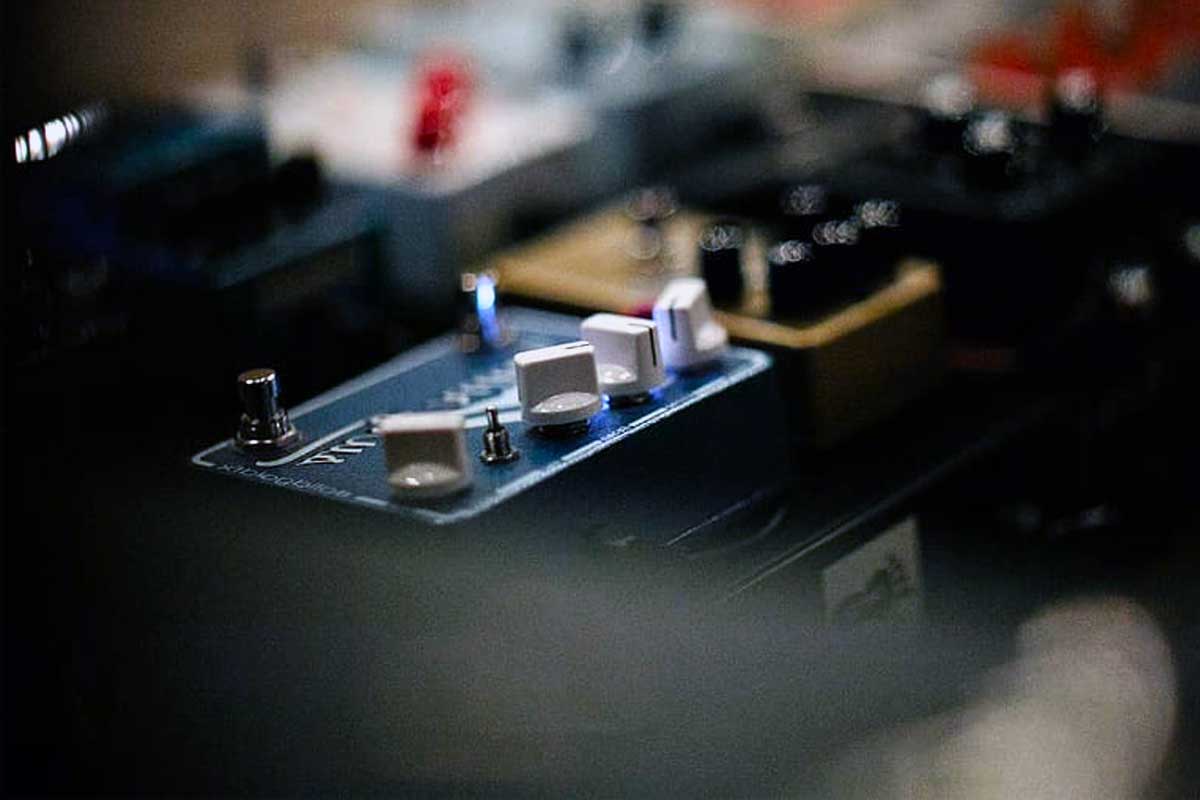
Maintaining Signal Strength
The choice between buffered bypass vs true bypass can significantly affect signal strength. Buffered bypass uses active electronics to maintain signal strength, combating the signal loss that can occur with long cable runs. The output jack of a buffered pedal strengthens the signal, enabling it to travel farther without degradation. Conversely, a true bypass pedal allows the signal to pass directly from the input jack to the output jack when disengaged, which can keep the signal’s clarity and presence intact, particularly in shorter signal chains.
Choosing the Right Setup for Your Needs
Choosing the right setup hinges on the musician’s need for either power in their signal or finesse in clarity. A setup with multiple pedals may benefit from a buffered bypass at the beginning or end of the signal chain to fortify signal strength. For those prioritizing the preservation of signal purity above all else, a true bypass configuration could be the key, especially if they are using fewer pedals or are concerned about the tonal coloration sometimes introduced by buffers. In environments where there’s a mixture of both digital and analog pedals, strategic placement of buffered bypass pedals can ensure an optimal balance of strength and tonal fidelity.
Advanced Insights
In the quest for pure sound, the concepts of buffered and true bypass have significant ramifications. This section presents an in-depth look at the intricate balance between internal circuitry and its impact on tonal qualities, alongside the role of effects pedals in shaping a musician’s sound palette.
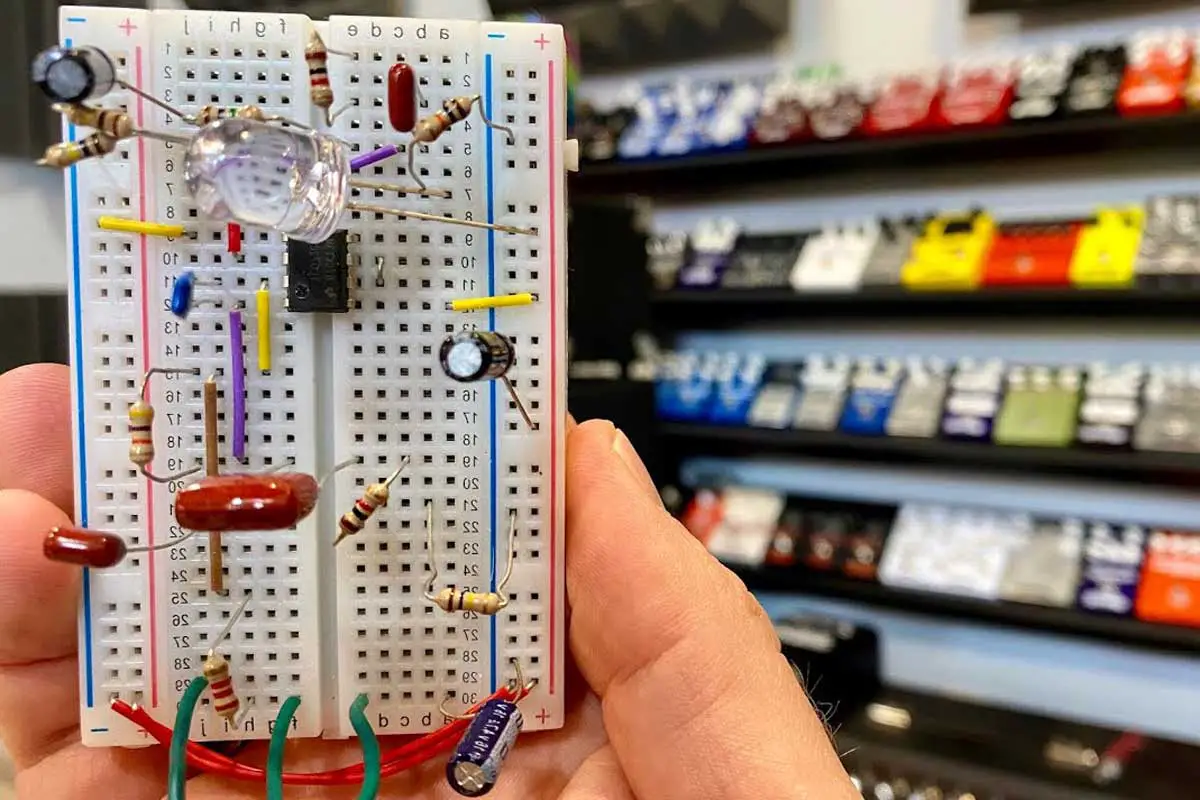
Internal Circuitry and the Effects on Tone
Internal circuitry plays a pivotal role in how signal processing equipment shapes an artist’s tone. With true bypass, the effect pedal’s internal circuitry is entirely bypassed when the pedal is switched off, ensuring the original signal passes directly to the amplifier with no interference, preserving signal strength and clarity. However, this can sometimes lead to high-end frequency loss, particularly in long cable runs, a phenomenon known as tone suck. Buffered bypass, on the other hand, includes active electronic components that condition the signal regardless of whether the effect is engaged. This can combat tone suck by providing a low-impedance output, but it may also color the tone, which could be undesirable for purists.
Effects Pedals and Tonal Experimentation
Effects pedals are the building blocks of a musician’s unique sound. Utilizing either buffered or true bypass in these pedals allows for a broad range of tonal experimentation. True bypass pedals are often favored by those who wish to maintain signal purity, especially when the effects chain is engaged, resulting in an unaltered tone when the effect is disengaged. Conversely, those who experiment with an extensive array of pedals may favor buffered bypass to prevent signal degradation. Internal circuitry choices thus become a key experimental variable for musicians looking to craft their signature tone through a mix of bypass approaches.
Closing Thoughts on Buffered Bypass vs True Bypass
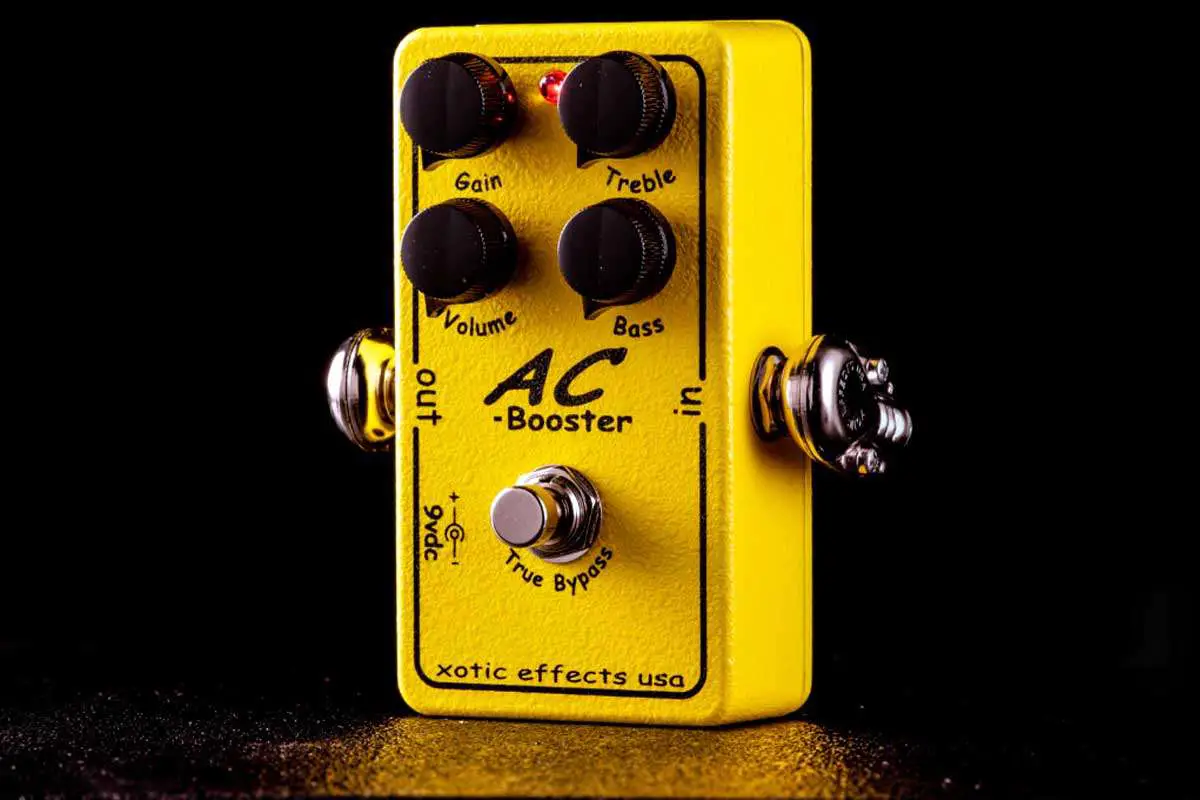
When guitarists consider their pedalboard setup, the choice between buffered bypass vs true bypass is crucial. Both methods affect how the original signal is preserved and transmitted, yet they cater to different musician needs.
A true bypass setup ensures that when the effect is disengaged, the signal directly travels to the amp with minimal tonal coloration. It’s often praised for maintaining the integrity of the original signal. However, a potential drawback is signal loss in lengthy cables.
In contrast, buffered bypass actively preserves signal strength over longer cable runs. This is especially beneficial in elaborate setups. However, the buffer’s quality is paramount; a subpar buffer can color the tone in undesirable ways.
Musicians must weigh these considerations:
- Signal path length: Long cable runs generally benefit from buffering.
- Tonal purity: Guitarists valuing a pristine signal when bypassed might lean towards true bypass.
- Pedal interaction: Some effects work better with a buffered input, while others do not.
Ultimately, the choice rests on the musician’s preference and the specifics of their gear. The impact on the original signal varies, and experimenting with both bypasses may yield the best personal sound solution.
